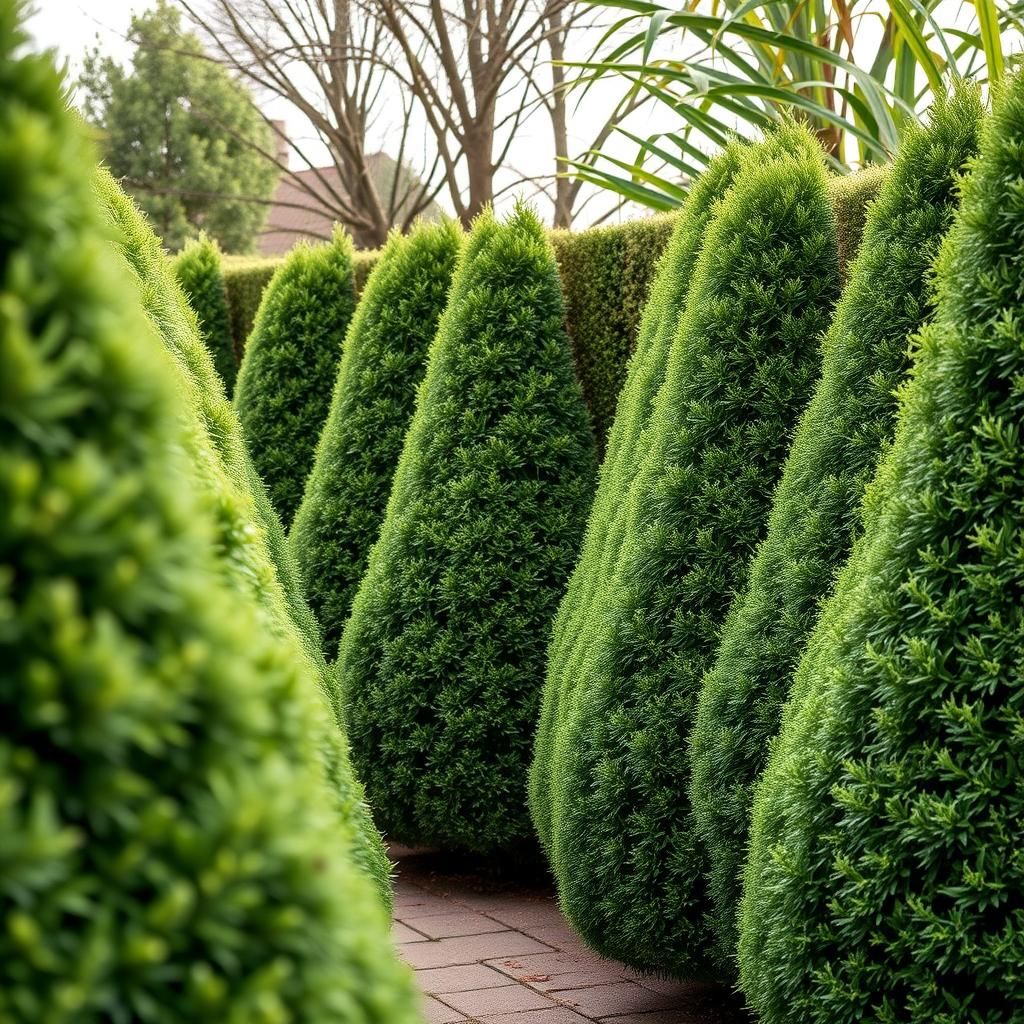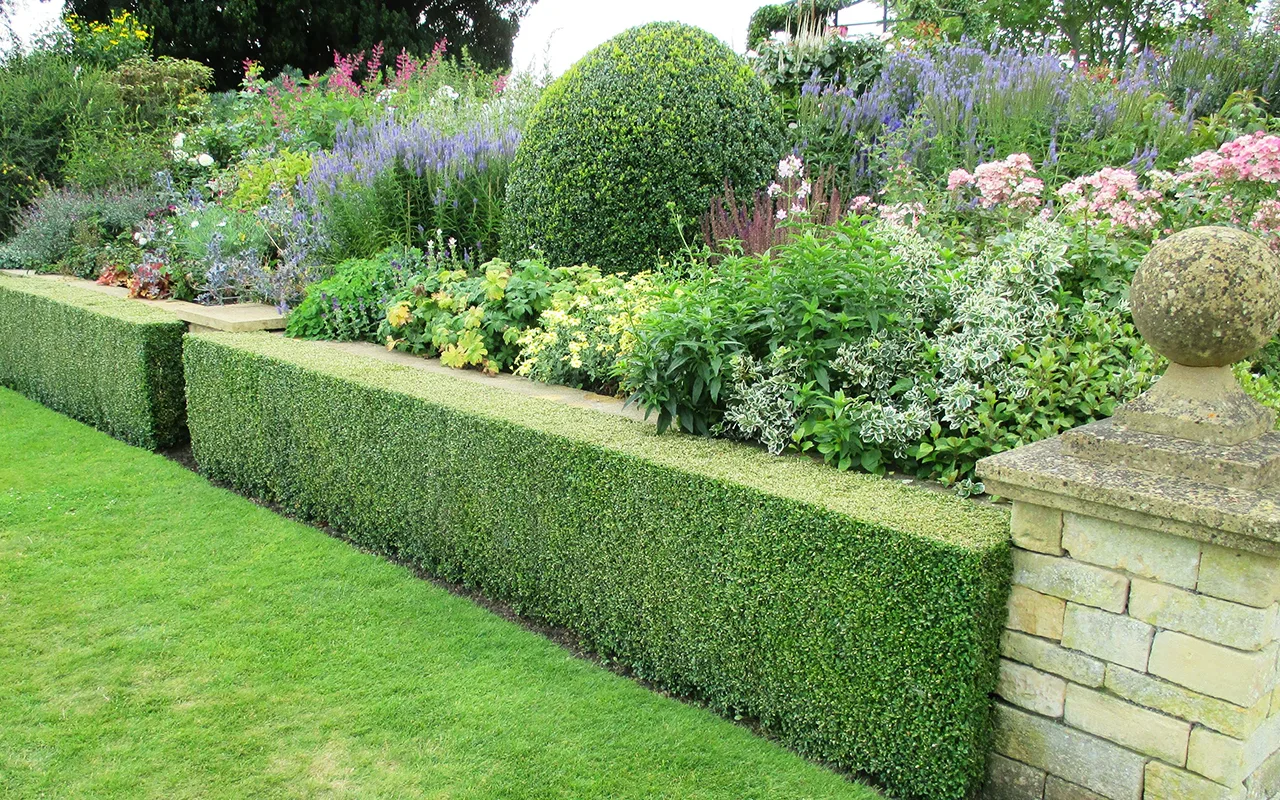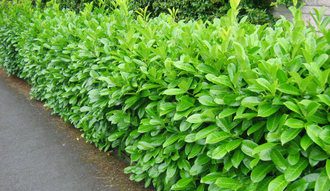What is the Spacing for Hedges? A Comprehensive Guide for Optimal Growth and Design.

When it comes to landscaping, the proper spacing for hedges is crucial for both aesthetic appeal and healthy growth. Understanding the ideal distance between plants can enhance the visual impact of your garden while ensuring that your hedges thrive without competing for resources. This comprehensive guide will explore the factors influencing hedge spacing, including plant variety, purpose, and environmental conditions. Whether you’re designing a privacy screen, a decorative border, or a windbreak, knowing the right spacing will help you achieve an optimal balance between functionality and design. Discover the essential tips for planting hedges that will flourish in your outdoor space.
What is the Recommended Spacing for Hedges?
When planning to plant hedges, it's essential to consider the spacing between each plant to ensure healthy growth and optimal coverage. The recommended spacing can vary based on the type of hedge being planted. Generally, a distance of 2 to 3 feet apart is recommended for smaller hedges, while larger varieties might require 4 to 5 feet or more. This spacing allows each plant to have enough room to grow without competing for nutrients and sunlight, which is crucial for their overall development. Understanding the specific needs of each plant species will provide a clearer picture of the best spacing practices for a thriving hedge.
Differentiating Between Types of Hedges
Different types of hedges require different spacing depending on their growth habits. For example, evergreen hedges like thuja or arborvitae generally need more space due to their broad foliage. In contrast, deciduous hedges may be planted closer together as they tend to be less expansive when fully grown. Knowing whether you're planting a formal hedge for privacy or an informal one for aesthetic appeal will affect how you space them.
The Impact of Hedge Size on Spacing
The size of the hedge plants at maturity significantly impacts how far apart they should be planted. Small shrubs might only require a 2-foot separation, whereas large species, such as laurel or boxwood, should be spaced 4 feet or more apart to prevent overcrowding. It is important to research each species' growth characteristics to establish an effective spacing strategy.
Soil and Growth Conditions
The soil quality and growing conditions in which you plant your hedge can also influence their spacing needs. Sandy or well-drained soils may encourage quicker growth, whereas heavier clay soils might slow growth rates, requiring further consideration for spacing. Additionally, if there is limited sunlight, increasing the distance between plants may help each one receive adequate light, promoting healthier development.
Maintenance and Pruning Effects on Spacing
Regular maintenance and pruning also affect how closely hedges can be planted. When hedges are well-maintained through trimming and shaping, plants can often be spaced closer together, but if they are neglected, they may need additional room to avoid crowding and increased competition for resources. Understanding this will allow for better long-term planning when establishing your hedge.
Examples of Ideal Spacing for Common Hedges
Here is a table illustrating the ideal spacing for some common hedge varieties:
| Hedge Type | Recommended Spacing |
|---|---|
| Boxwood | 2-3 feet |
| Laurel | 4-5 feet |
| Yew | 3-4 feet |
| Privet | 2-3 feet |
| Thuja | 4-5 feet |
What is the best spacing for hedges?

The best spacing for hedges depends on the type of hedge plant, its intended purpose, and the desired density of the hedge. Generally, spacing varies based on whether the hedge will be used for privacy, aesthetics, or as a windbreak. Typically, a spacing of 18 to 36 inches (45 to 90 cm) apart is recommended for most hedge types, allowing for healthy growth while ensuring that the plants eventually intertwine.
Understanding Hedge Plant Types
Different types of hedges, such as deciduous, evergreen, and flowering hedges, require different spacing.
- Deciduous Hedges: These typically need to be spaced further apart, about 24 to 36 inches, to accommodate their spreading roots.
- Evergreen Hedges: Spacing can be closer, about 18 to 24 inches, since these plants maintain foliage year-round and create density quicker.
- Flowering Hedges: Spacing will depend on the growth habit of the species; usually between 18 to 24 inches is adequate for beautiful blooms.
Factors Affecting Hedge Spacing
Several factors can influence the ideal spacing of a hedge.
- Growth Rate: Fast-growing species may require closer spacing, while slow growers need more space.
- Soil Quality: Nutrient-rich soil can support closer plantings, whereas poor soil may necessitate wider spacing for better resource allocation.
- Sunlight Availability: Hedges in shady areas may need more space to receive adequate light, promoting healthy growth.
Purpose of the Hedge
The reason for planting a hedge will greatly affect its spacing.
- Privacy Hedges: For maximum privacy, plants should be spaced closer together, about 18 to 24 inches, allowing for a dense barrier.
- Windbreaks: These may require more robust spacing of 36 inches to ensure that wind flows properly around the plants.
- Aesthetic Hedges: If the hedge is primarily for visual appeal, 2 to 3 feet apart can allow for individual shapes to be appreciated.
Maintenance Considerations
The maintenance needs associated with a hedge can also dictate spacing.
See also:
- Pruning: Closer spacings will necessitate more frequent pruning to maintain health and shape.
- Air Circulation: Wider spaces promote better air circulation, reducing disease risk and keeping plants healthier.
- Access for Care: Wider spacing allows for easier access for tasks such as trimming and weeding.
Common Mistakes in Hedge Spacing
Avoiding common mistakes can lead to a healthier hedge.
- Overcrowding: Planting too closely can lead to competition for resources and makes the hedge susceptible to disease.
- Too Much Space: Spacing them too far apart may delay the time it takes to establish the desired privacy or appearance.
- Ignoring Growth Size: Failing to consider the mature size of the plants can result in unexpected gaps or overcrowding.
How far apart do you place hedges?

The distance between hedges largely depends on the type of hedge plants being used, their growth habits, and the desired aesthetic and functional outcomes. Generally, hedges should be spaced to allow for proper air circulation, sunlight penetration, and adequate growth without overcrowding. A common guideline suggests planting hedges two to three feet apart for smaller shrubs, while larger varieties may need to be spaced four to six feet apart. Below are the key factors to consider when determining the spacing of hedges.
Type of Hedge Plants
The type of plants used for hedging significantly influences how far apart they should be spaced. Different plants have varying growth rates and ultimate sizes.
- Small Shrubs: For smaller varieties such as Boxwood or Lavendar, a spacing of 2 to 3 feet is often ideal to create a dense, compact hedge.
- Medium Shrubs: If using medium-sized plants like Hydrangeas or Forsythia, consider spacing them 3 to 4 feet apart.
- Large Shrubs: Larger varieties, such as Arborvitae or Leyland Cypress, should be spaced 4 to 6 feet apart due to their broader growth.
Desired Height and Density
The intended height and density of the hedge also play a critical role in determining spacing.
- Short Hedges: If you want a low-maintenance hedge, plant smaller shrubs closer together to achieve shorter heights and denser foliage.
- Tall Hedges: For creating privacy screens, larger plants should be placed further apart, allowing them to grow tall without competing for space.
- Dense Coverage: If the goal is to create a thick hedge quickly, planting closer can help fill in gaps faster, but ensure that plants are compatible.
Soil and Environmental Factors
Soil type and environmental conditions can also affect how far apart hedges should be planted.
- Soil Quality: In nutrient-rich soils, plants may thrive better when spaced closer together, while poor soils may necessitate greater spacing.
- Water Availability: Areas with limited water may require more space between plants for adequate moisture absorption.
- Climate Considerations: In harsher climates, plants may need additional spacing to reduce competition for resources like sunlight and water.
Maintenance Considerations
Maintenance is another aspect that can guide the spacing of hedges.
- Pruning Access: Adequate spacing allows for easier access when pruning, ensuring that each plant can be maintained without too much difficulty.
- Pest Control: Spacing can help with pest management, as it can reduce crowding that might attract pests or diseases.
- Air Circulation: Proper spacing enhances air circulation, reducing the risk of fungal diseases which can thrive in overly dense plantings.
Aesthetic Preferences
Lastly, personal aesthetics and the overall design of the landscape can dictate the distance between hedges.
- Formal Design: For a structured, formal appearance, evenly spaced hedges create a balanced look that is visually appealing.
- Informal Design: In a more casual setting, naturalistic plant spacing may be preferred, allowing for irregular growth patterns.
- Layering Plants: When combining different types of hedges, spacing allows for layering, where taller plants back shorter ones, enhancing depth.
How far apart should I plant hedge bushes?

To determine the optimal distance for planting hedge bushes, several factors must be considered. Generally, the spacing can vary based on the type of hedge, its intended purpose, and the desired density. Here are some guidelines to follow:
- Type of Hedge: Different shrubs have varying growth habits. For example, fast-growing varieties require more space compared to slower-growing ones.
- Mature Size: Consider the mature size of the hedge bushes; if left unspaced, they can compete for light and nutrients, potentially stunting their growth or leading to disease.
- Purpose of the Hedge: Whether you are planting for privacy, noise reduction, or aesthetic appeal will influence how close or far apart you should plant them.
On average, hedge bushes should be planted anywhere from 2 to 5 feet apart depending on their growth rate and size. For example, a dense hedge may require a closer distance, while a more open planting may allow wider spacing.
Factors Affecting Planting Distance
The distance between hedge bushes can be greatly influenced by several factors. These include:
See also:
- Growth Rate: Fast-growing shrubs may require less space initially but will fill in quickly.
- Mature Size: Large bushes need more space to avoid overcrowding.
- Sunlight: Ensure that each plant has access to adequate sunlight, especially if they are densely planted.
Common Hedge Variants
Different types of hedge bushes come with distinct requirements. Understanding these can help you make an informed decision:
- Boxwood: Generally spaced around 2 to 3 feet apart for a more formal hedge.
- Laurel: Can be planted about 3 to 4 feet apart, depending on the variety.
- Privet: A popular choice for quick hedges; should be spaced approximately 2 to 3 feet apart.
Soil and Environmental Conditions
The conditions of your soil and local environment can also dictate how closely to plant your hedge bushes:
- Soil Quality: Fertile soils may support closer planting, while poor soils necessitate more space.
- Drainage: Well-draining soil can help prevent root rot in denser plantings.
- Climate: Different climates can affect the rate of growth and thus the planting distance.
Maintenance Considerations
Ongoing maintenance plays a crucial role in how close you should plant your hedge bushes:
- Trimming and Pruning: Regular maintenance allows for denser planting as plants can be controlled.
- Pests and Diseases: Closely planted bushes can spread diseases more easily, so spacing should be a consideration.
- Access for Care: Ensure enough space for maintenance and access to each bush.
Desired Hedge Density
The density of the hedge directly relates to the spatial arrangement of the bushes:
- Dense Hedging: For complete privacy, plant closer together, around 2 feet apart.
- Loose Hedging: For a more natural look, consider spacing them 4 or more feet apart.
- Layering Techniques: Consider a mix of sizes by alternating different bush types for varied density and interest.
What is the best month to plant a hedge?

The best month to plant a hedge typically depends on the specific species being planted and the climate conditions in your region. However, autumn (particularly from September to November) is generally considered the optimal time to plant many types of hedges. During this season, the soil is still warm from the summer, allowing plants to establish their root systems before the colder winter months. Additionally, there’s usually more moisture in the air and soil, helping young plants thrive.
Understanding Local Climate
The climate in your area plays a critical role in determining the best month for hedge planting. Different regions have varying weather patterns that can affect growth rates.
- Temperate climates: In these areas, planting in early spring or fall is ideal due to moderate temperatures.
- Warm climates: Here, it is often best to plant in early spring before the heat of summer sets in.
- Cold climates: Planting in late spring is recommended to ensure that plants are not stressed by frost.
Types of Hedges
Different types of hedges thrive in different planting conditions. Understanding the characteristics of your chosen hedge species can inform your planting schedule.
- Deciduous hedges: These are best planted in early spring or late fall when they are dormant.
- Evergreen hedges: They can be planted in spring or autumn, although fall is often preferred to allow root establishment before winter.
- Flowering hedges: These might require specific timing based on blooming seasons; late spring is often ideal.
Soil Preparation
Proper soil preparation is crucial for successful hedge planting. If the soil conditions are not right, even the best planting month won't yield optimal results.
- Soil testing: Conduct tests to check for pH and nutrient levels to ensure the soil supports healthy growth.
- Soil amendment: Incorporate organic matter or fertilizers as needed to enhance soil quality.
- Drainage: Ensure good drainage to prevent root rot; planting during dry months can help mitigate soggy soil conditions.
Watering Needs
Understanding the watering needs during the initial growing phase is essential when planting a hedge. This aspect can affect the timing of your planting, especially regarding seasonal rains.
- Consistent moisture: Newly planted hedges need regular watering, particularly in dry spells, regardless of planting month.
- Mulching: Applying mulch can help retain moisture and suppress weeds.
- Adjusting for rain: Be mindful of natural rainfall patterns; adjust your watering schedule based on local weather conditions.
Long-term Care
Regardless of when you plant, establishing a long-term care strategy is vital to ensure that your hedge matures healthily.
- Pruning: Regular pruning helps shape the hedge and encourages denser growth.
- Pest and disease management: Monitor for signs of pests or diseases that can hinder growth.
- Fertilization: Apply fertilizers as needed based on soil tests throughout the hedge’s growth cycle.
Questions from Our Readers
What is the ideal spacing for hedges?
The ideal spacing for hedges typically depends on the species of the plant and its mature size. Generally, a spacing of 2 to 3 feet apart is recommended for smaller varieties, while larger hedges may require a distance of 3 to 5 feet to allow proper growth and air circulation.
How does spacing affect hedge growth?
Spacing significantly affects hedge growth because it determines how much light, water, and nutrients each plant can access. If hedges are planted too closely, they may compete for these vital resources, leading to stunted growth and a higher likelihood of disease.
See also:
Can I plant hedges closer together for a denser look?
Yes, you can plant hedges closer together for a denser look, but it is essential to note that this may require more frequent trimming to maintain their shape. Planting them too close can also result in poor airflow, which may increase the risk of pests and diseases.
What should I consider when determining hedge spacing?
When determining hedge spacing, consider the mature size of the plants, the climate, and the type of soil. Additionally, account for any potential obstructions nearby, such as walkways or fences, that might affect growth and require a strategic layout.

If you want to read more articles like What is the Spacing for Hedges? A Comprehensive Guide for Optimal Growth and Design., we recommend you check out our Hedges category.
Leave a Reply
Related Articles